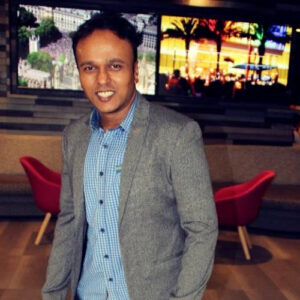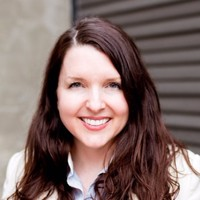eLearning Evolution In The Hands Of Modern Sellers
It's been emphasized repeatedly, and the sentiment is crystal clear: continuous seller enablement strategies are essential for keeping the sales force motivated and involved. This is particularly significant in today's constantly evolving and often unpredictable market, marked by rapid technological advancements, continued inflation [1], and multiple cutbacks and closings. From Rite-Aid to Bed Bath & Beyond, "big company bankruptcies hang over the economy," says the Wall Street Journal.
In such an environment, one defined by uncertainty and transformation, as well as precipitous business relationships, is "learning" enough for enablement technology? Does this provide enough assistance for sellers, enough of what AI-enabled tech is capable of delivering? Or are learning-only systems and platforms stuck in the past? Furthermore, how can technological platforms combine learning tools with other pathways to productivity, aiming to alter behavior and create the right selling reflexes in the sales force?
Current Tools And Technology Used For Seller Enablement
Understanding The LMS (Learning Management System)
At its core, the LMS is a software platform that provides companies with a centralized location to create, manage, and deliver training content to their sellers. LMSs have come a long way since their origins in the 1920s, driven in part by businesses and their workforces expanding across the globe. Now, modern LMSs, for instance, can facilitate chat rooms and messaging forums, fostering collaboration among learners and enabling social learning from peers. There are a number of excellent tools available—and the market is only poised to grow in the coming years—as of 2022, the global LMS market held a valuation of $16.1 billion, and it is projected to reach $61.8 billion by 2032 [2].
Though many companies use legacy LMSs for their sales forces, the limitations of this technology are clear. LMSs generally have a single, linear "path to productivity" for each individual, and are used more or less exclusively for training people, rather than continuous seller enablement over time.
Moreover, administrators determine the seller’s pathway, making it depersonalized regarding the goals, skills, and preferences of the seller themselves. It’s easy for a seller to feel bored, alienated, and isolated using LMS technology, which can even make its adoption counterproductive. An LMS, thus, can easily "depress" the employee experience it is supposed to elevate. It’s not hard to see why LXPs arose, particularly in the era of remote and gig work, in which motivation and engagement have become key factors in seller success and organizational growth.
Exploring The LXP (Learning Experience Platform)
LXPs enhance the accessibility of learning content, with their main advantage lying in their capacity to facilitate and personalize learning experiences. Emphasis is on custom, individualized learning paths, instead of the mantra "Each employee needs to learn about X, so let’s deliver that content to them." As their name implies, LXPs lean more heavily into the idea of "experience." By "experience" we mean the holistic perspective of the learner’s entire learning pathway, from onboarding to sales, training reinforcement, and upskilling. LXPs don’t tend to stop once the individual seller finishes initial training, like LMSs often do. Instead, they wrap around the full lifetime of their learning, providing training content throughout their tenure.
LXPs are more tailored to the modern seller experience than LMSs—more mobile, remote, and personalized. For instance, LXPs tend to support microlearning, an approach that aligns with modern learners’ preferences for short learning sessions that can be completed on the go. Smart technology helps LXPs understand the seller’s individual preferences and mold their assigned learning content around them. In this respect, they’re certainly an advance over the LMS’s totalizing one-size-fits-all approach.
Yet, problems surface when LXPs try to do much more than educate and train. In a challenging economy, sellers are faced with angry, hesitant customers, with less money to spend. Is learning really the right model for employee experience technology today, and going forward?
PEP As A Paradigm Shift Beyond Learning: Enablement Is Key
While learning is certainly helpful to seller enablement still, it is important to recognize that it has limitations in today's landscape. Faced with a toxic combination of consumer hesitancy, economic uncertainty, and corporate austerity, sales forces must confront a wholly different market from the one in which LMSs and LXPs came of age, from 2012-2021, a time when inflation and interest rates were low, investment dollars cheap, and consumer behaviors predictable. Learning is no longer enough, if it ever was, for seller enablement.
Defining The PEP (Performance Enablement Platform)
Performance Enablement Platforms (PEPs) are the next evolution of seller enablement software, focusing not on learning and lessons—which after all, might not be implemented correctly by the seller when it is time to make the sale—but instead on sales performance and Customer Experience. Whereas learning platforms prioritize the completion of lessons, PEPs emphasize sales performance as their core KPI. In the course of improving sales performance, PEPs surface smart to-dos and personalized activities in the flow of work, resulting in measurable returns and more memorable Customer Experiences that encourage repeat visits and larger order sizes.
As this McKinsey tech trends article from last year anticipates, there will be a shift away from the "foundational learning" approach toward skills snippets—the smallest building blocks of capabilities—being integrated directly into the workflow. That way, these snippets are "delivered when needed," instead of ahead of time. While McKinsey’s analysts project that this method of integration will be called "LearnOps," the true paradigm shift is away from learning and training altogether and toward performance.
PEP Vs. LMS And LXP
Having a performance orientation solves one of the core problems presented by eLearning tools: that they bear no direct relationship to real-time sales growth. Instead, eLearning tools only prepare sellers to face abstract situations, which makes it challenging to attribute any profitable gains to such tools and, thus, make the case for budget requests.
The standard LMS and LXP, while quite efficient in some respects, do not do enough to enable the seller for the modern consumer goods market and must be reimagined as, or supplemented with, the PEP model. This is particularly important as inflation and high interest rates continue to batter consumers, with overall sales growth falling from 2022-23 [3], and L&D departments struggle to demonstrate value added to the organization.
Instead of lessons that prepare the seller to face situations that may occur, PEP assists the sales force in the flow of work, in the midst of foot traffic and customer interactions, for a true human-machine hybrid experience. This, after all, represents the promise of AI technology—not replacing human sellers, which would result in a massive economic upheaval, but augmenting them with technology that helps them do what humans do best.
PEP Adoption: The Data
Data-based outcomes bear out the value of this technology. In this report [4], analysts found that, with PEP technology, sales forces increased order sizes 3x, and organizations saw 21% higher sales from sellers actively using PEP. This cohort, in fact, was responsible for 24% of these organizations’ sales numbers, far outstripping their raw numbers as a component of the sales force. This same data is not available for LXPs and LMSs because they do not accelerate sales performance, only intangibles like training completion.
How will organizations that adopt PEP reimagine learning and doing? It is possible to imagine L&D professionals whose core metric of success is in PEP adoption and direct measurable impact on the company’s bottom line. As an example, think about a training leader who spends much of her time optimizing PEP adoption store-by-store in her region. She ensures that the sales force is effectively utilizing and implementing their PEP, motivating them to explore it, and incentivizing them with rewards to use it. Take Fleet Feet’s Education Manager as a real-world case—she boosted sales by +140% through such efforts.
Reimagining The Meaning Of Seller Enablement And The Role Of L&D
The LMS and LXP have served their purposes well in the recent history of corporate enterprises. However, it is time to ask whether the learning-led model of enablement has outlived its usefulness when a more exact, sales-centric approach is not only possible but readily available in the form of PEP.
At the same time, under a PEP model, the L&D department can be revitalized and reimagined for the modern consumer economy. With the sales force being enabled rather than simply educated, L&D professionals will find a new calling as teams focused on the adoption and maximization of PEP technology among the sales force at scale. Modern problems require modern solutions, and not only technology but also the mode of technology employed must evolve along with the market. PEP is a broader-spectrum approach, yet one more targeted to the critical corporate KPIs like revenue and customer retention, taking sales forces beyond learning and into the realm of action. The time to evolve is now, alongside the consumer market, before these consumers leave lagging companies behind.
References
[1] Consumer prices up 3.7 percent from September 2022 to September 2023
[2] LMS Statistics: Manage Your Learning System in Different Way









